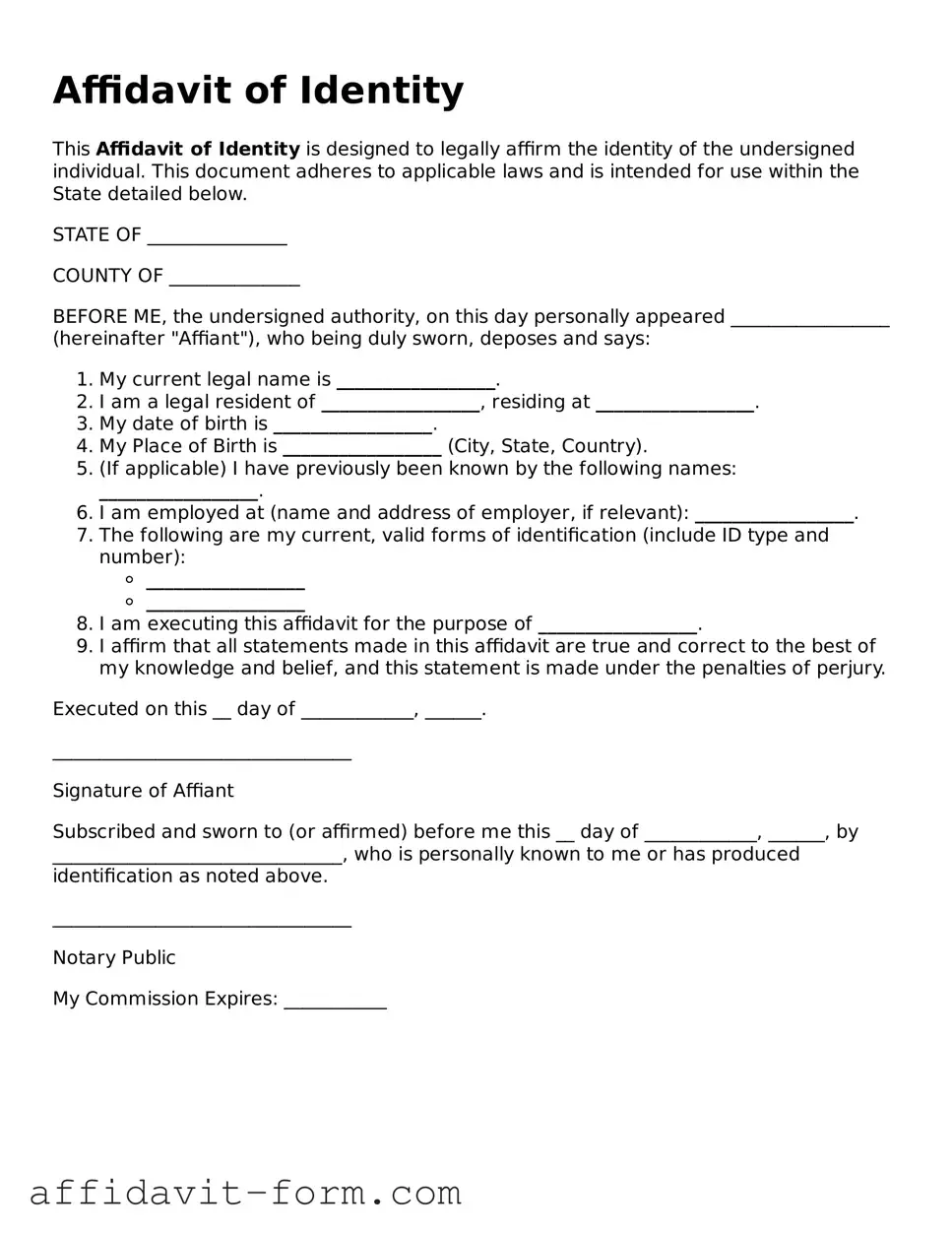Affidavit of Identity
This Affidavit of Identity is designed to legally affirm the identity of the undersigned individual. This document adheres to applicable laws and is intended for use within the State detailed below.
STATE OF _______________
COUNTY OF ______________
BEFORE ME, the undersigned authority, on this day personally appeared _________________ (hereinafter "Affiant"), who being duly sworn, deposes and says:
- My current legal name is _________________.
- I am a legal resident of _________________, residing at _________________.
- My date of birth is _________________.
- My Place of Birth is _________________ (City, State, Country).
- (If applicable) I have previously been known by the following names: _________________.
- I am employed at (name and address of employer, if relevant): _________________.
- The following are my current, valid forms of identification (include ID type and number):
- _________________
- _________________
- I am executing this affidavit for the purpose of _________________.
- I affirm that all statements made in this affidavit are true and correct to the best of my knowledge and belief, and this statement is made under the penalties of perjury.
Executed on this __ day of ____________, ______.
________________________________
Signature of Affiant
Subscribed and sworn to (or affirmed) before me this __ day of ____________, ______, by _______________________________, who is personally known to me or has produced identification as noted above.
________________________________
Notary Public
My Commission Expires: ___________
